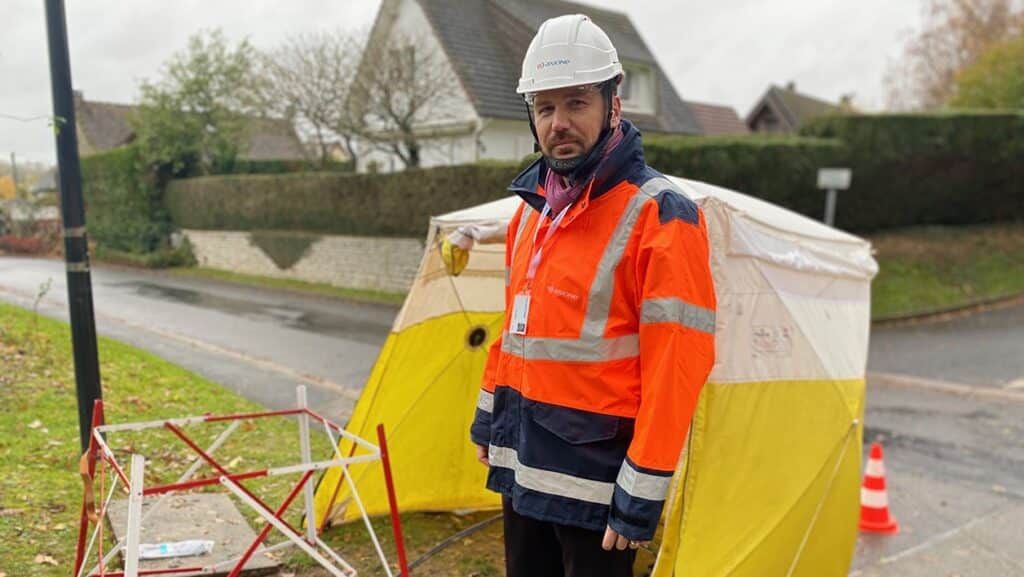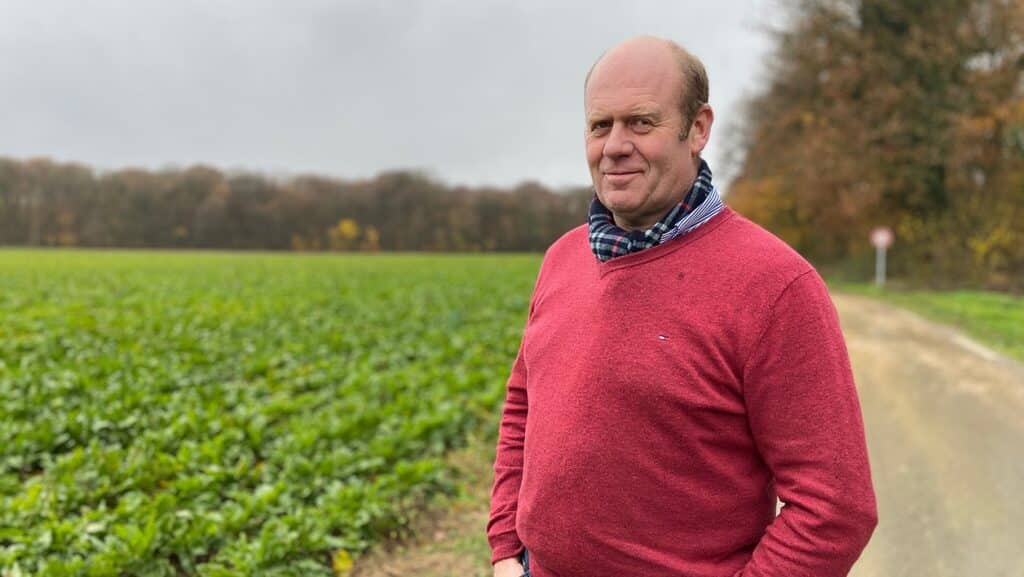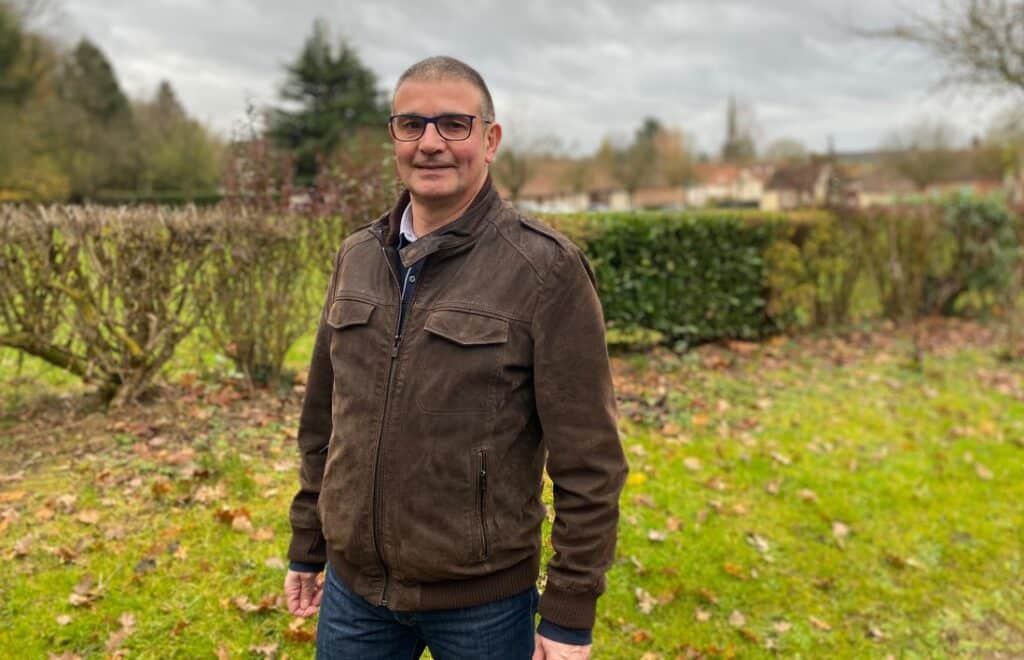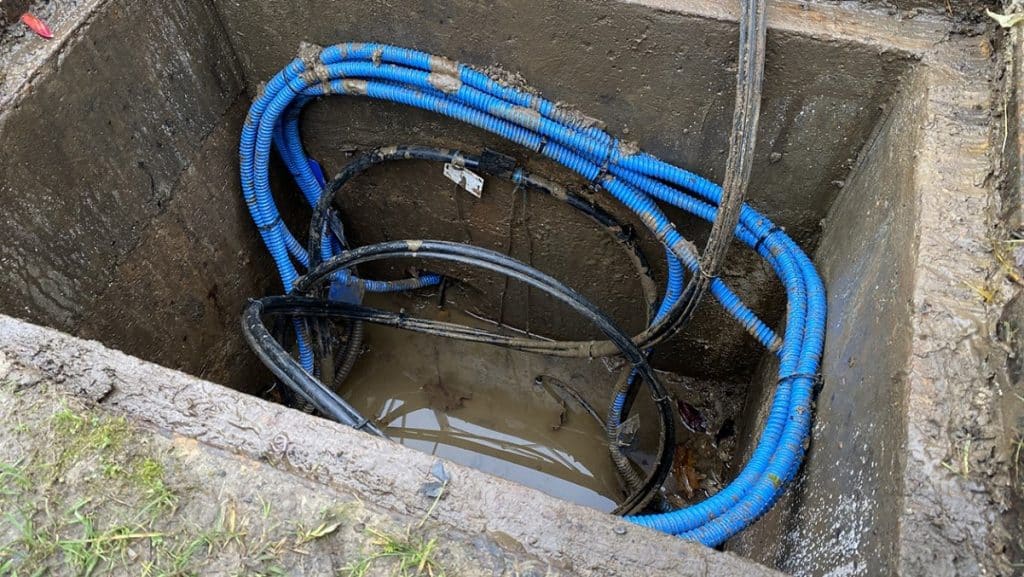Getting fibre into farms is the challenge for the Oise department, which has financed a public network for rural dwellers. The final lines will be delivered several years early, as we could witness when we were there.
ARTICLE 01NET.COM AMÉLIE CHARNAY
Sébastien Liénart farms in Puiseux-le-Hauberger, a village with 844 inhabitants in the Oise department, south of Beauvais. For over a year, his farm and home have been supplied with FttH, the top of the range fibre to go out to the subscriber.
Like him, all the rural dwellers in the Oise will be eligible for fibre optic internet by the end of the year, and they will be able to request a connection with nothing to pay out, even if they live in an isolated location. This is how the Oise will become the first rural area with complete fibre optic coverage in Europe.
I am better connected than in some cities
Fibre optic internet fulfils Sébastien’s connectivity needs. The farmer’s usage is on the rise…consulting the weather, using software for tracking plots of land, video monitoring, manufacturers’ apps like ones from Michelin for checking tyre pressure. “I’m also going to invest in an automated machine for sorting asparagus. If I have an issue with it, the maintenance and support teams can work remotely thanks to fibre”, he explained. His family are also pleased now about being able to get the Netflix video streaming service. “Today I think that I am better connected than in some cities”, he said in conclusion.
Fibre will be able to attract companies and people
Further to the west of the department,in
Trie-Château, the mayor elect Laurent Desmeliers impatiently watches the final
adjustments to the network before its market launch for its 1900 residents.
“A lot of the people who live here work
in Paris for large companies where remote working is commonplace. For that you
need decent internet speed, so that’s fiber”, he asserts. “And then, that may attract some companies,
artisans, even residents”, he added, with the conviction that these
days, connectivity is a criterion that is just as important as nearby schools
when moving home. He is also delighted that the town hall can benefit from it,
and he believes he will be able to save time with admin tasks.
A programme launched in 2013
At first glance, it is somewhat surprising that the Oise is a prime example, as rural areas are not really considered as the most fertile soil for private operators. The investment cost per socket is higher in the country and it earns less. This success story is nothing to do with dumb luck. It was the department’s decision to create a Public Initiative Network, or a PIN, as it is known in Telecoms jargon.
The fibre optic network belongs to the municipality and has been subsidised by the French state, the department, the region, the departmental council and Europe. The Syndicat Mixte Oise Très Haut Débit (SMOTHD) is managing the program that was launched in 2013. The system functions like a kind of patchwork and does not include more densely-populated areas like Beauvais, Creil, Compiègne and Senlis. It only covers rural areas. This means that an industrial programme had to be managed over an area that was fragmented and disparate.
It takes longer to build a fibre optic network in rural areas, and it’s more costly too

Loïc Dupont, the director of the Oise THD project for Axione
Following a call to tender, the work was awarded to a group of companies that includes Axion, Bouygues Energies et Services and Sobeca, but a subsidiary of SFR will take care of sales and marketing, maintenance and network operations. Reliability is the order of the day, as the programme will be completed four years early. The last fibre access node was inaugurated last September and the final local connection point will be connected in early 2020. However, you can still come across teams working out in the field. Loïc Dupont, the director of the FttH project Axione, ran the Oise THD operation. He is here to fine-tune the final details prior to handover. Occasionally, bandwidth tests are inconclusive and some soldering has to be redone.
“It takes longer to build a fibre optic network in rural areas, but not necessarily because of the deployment. The studies are the most complicated part. You have to go and check the entire infrastructure throughout the department”, Loïc Dupont points out. The choice was made to go above ground on telegraph poles for half of it, and to use pre-existing underground passages. “ It’s also more expensive because fibre optic cables need to be laid to connect homes that are far apart and in very different locations. Public authorities are a vital element in instigating this kind of project”, he posits. The advantage in the Oise is that it is not rugged terrain, there is a relatively high population density in rural areas without too many completely isolated farms, making it a rural area that is easier to provide complete fibre coverage for than say, the Creuse or the Haute-Savoie departments.
There must be no difference between residents
10,000 km of fibre and 300,000 sockets were rolled out in 643 municipalities at a cost of 300 million euros. A contribution of 370 euros per socket was also requested at the inter-municipal level to finance the connection to the subscribers’ homes. In the end, the average cost per socket was 1200 euros per resident. “It is definitely expensive. But at least we can say that there is no difference between residents, no matter where they are”, says Charles Locquet enthusiastically as the Chairman of Oise Très Haut Débit and department councillor. “The issue is about territorial fairness. The most important thing is not to have two separate Frances. It is crucial for everyone to be able to benefit from the same connection quality in order to have access to education, culture, employment, the chance to grow their business”, he stresses.
According to Arcep’s latest figures, 6.4 million homes have signed up for a fibre subscription in France, and 16.7 million homes were eligible for FttH as of the third quarter of 2019. So the majority of the population of our country still needs to be covered by fibre networks, but not in the rural Oise!
* 01net.com is edited by a subsidiary of NextRadioTV, which is itself wholly-owned by SFR Médias.
Amélie Charnay
DO YOU REMEMBER?
The 44th and final optical access node in the Public Initiative Network of the Oise was inaugurated on Wednesday September 11, 2019 in Attichy. High-speed fibre is also moving into other areas!




